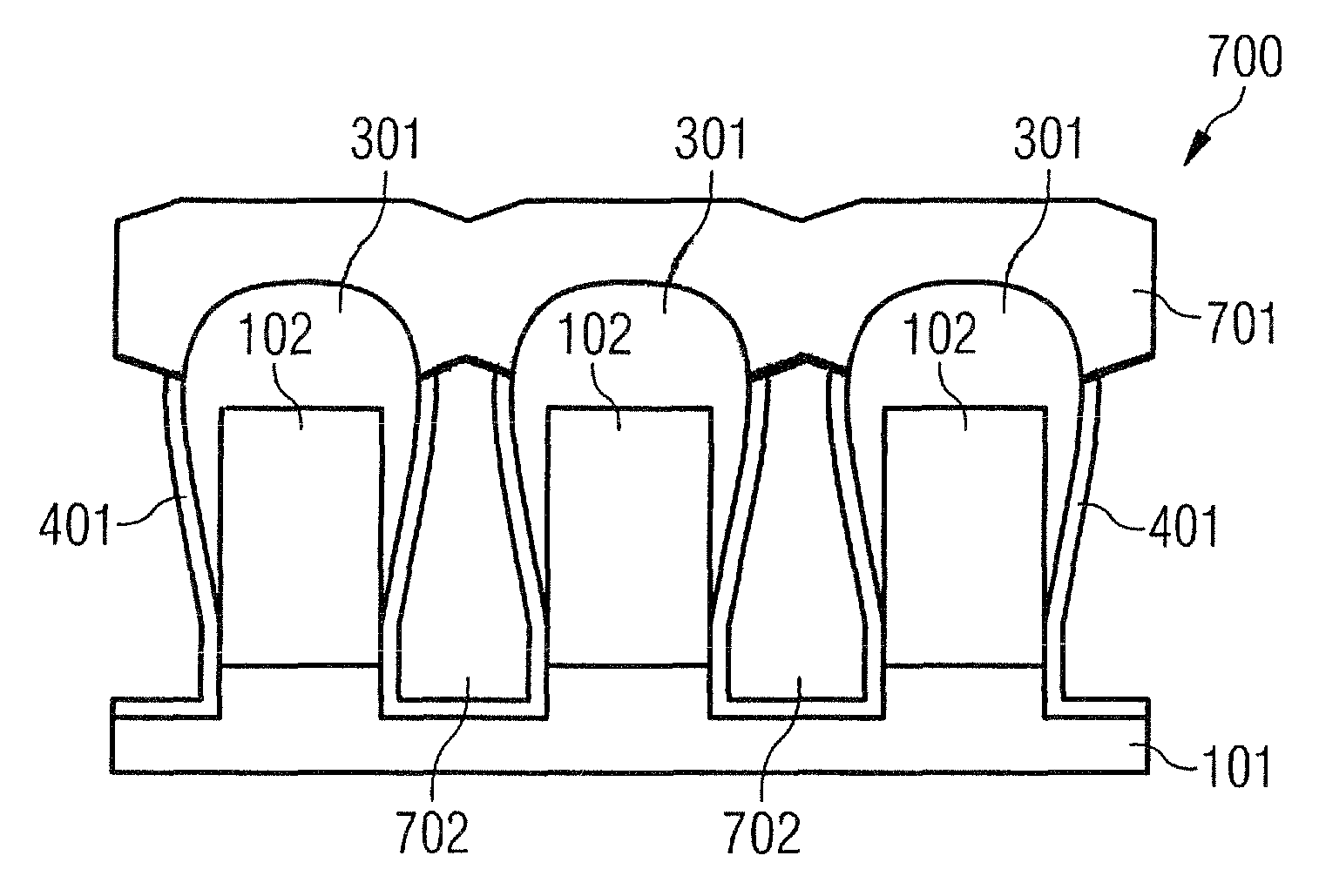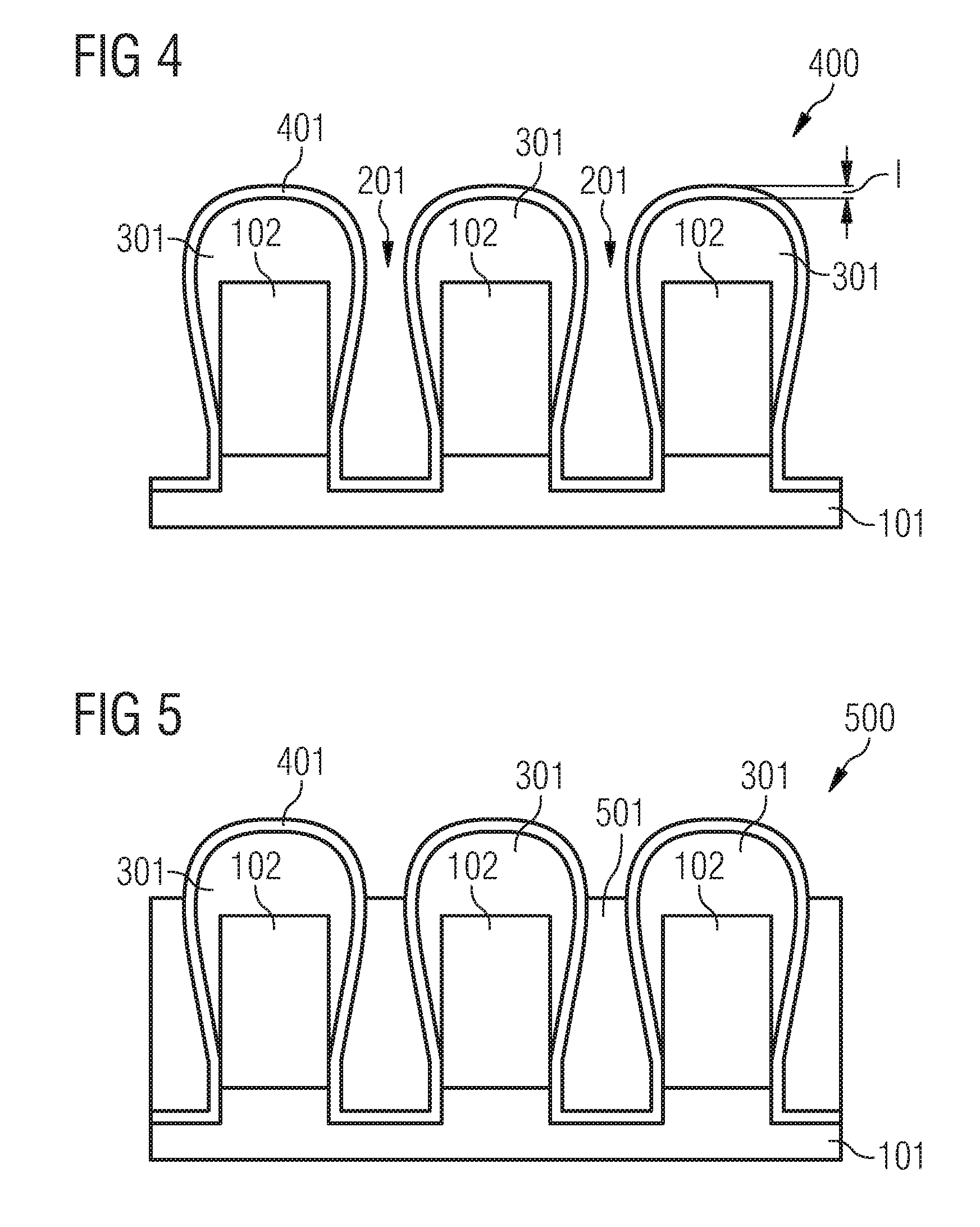Method for manufacturing a layer arrangement and layer arrangement
a manufacturing method and technology of layer arrangement, applied in the direction of semiconductor devices, semiconductor/solid-state device details, electrical devices, etc., can solve the problems of undesirable crosstalk, high signal propagation time, and high power loss
- Summary
- Abstract
- Description
- Claims
- Application Information
AI Technical Summary
Benefits of technology
Problems solved by technology
Method used
Image
Examples
Embodiment Construction
[0080]Identical or similar components in different figures are provided with identical reference numerals.
[0081]A description is given below, referring to FIG. 1 to FIG. 7, of a method for producing a layer arrangement in accordance with a first exemplary embodiment of the invention.
[0082]In order to obtain the layer sequence 100 shown in FIG. 1, trenches are formed on a dielectric substrate 101 (for example composed of silicon oxide material) using a lithography method and an etching method. Copper material is deposited on the layer sequence thus obtained. Material of the deposited copper layer is etched back using a CMP method (“chemical mechanical polishing”), whereby copper interconnects 102 are formed in the trenches. The copper interconnects 102 are therefore produced according to the damascene principle. A diffusion barrier (for example composed of TaN / Ta) not shown in FIG. 1 may be formed between a respective copper interconnect 102 and the substrate 101. A barrier layer may...
PUM
 Login to View More
Login to View More Abstract
Description
Claims
Application Information
 Login to View More
Login to View More - R&D
- Intellectual Property
- Life Sciences
- Materials
- Tech Scout
- Unparalleled Data Quality
- Higher Quality Content
- 60% Fewer Hallucinations
Browse by: Latest US Patents, China's latest patents, Technical Efficacy Thesaurus, Application Domain, Technology Topic, Popular Technical Reports.
© 2025 PatSnap. All rights reserved.Legal|Privacy policy|Modern Slavery Act Transparency Statement|Sitemap|About US| Contact US: help@patsnap.com



